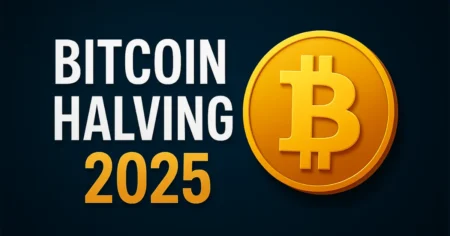Best coins for staking 2025
Introduction
If you’re into crypto, you’ve probably heard about staking a simple way to earn passive income just by holding certain cryptocurrencies. In 2025, staking has become more popular than ever. As more people look for smart ways to grow their crypto without trading, staking is standing out as a top choice.
But with so many coins available, a common question is: Which coins are the best for staking this year? That’s exactly what this article is here to answer.
We’ll break down what staking is, what makes a good staking coin, and share a list of the best staking options for 2025. Whether you’re new to staking or looking to update your crypto strategy, this guide will help you make confident and informed decisions.
Let’s get started.
What Makes a Coin Good for Staking in 2025?
Not every cryptocurrency is worth staking. To get the best returns and lowest risks, it’s important to know what makes a coin “good” for staking. In 2025, as the crypto space becomes more competitive and advanced, here are the key factors to look for:

High and Stable Annual Returns (APY)
- The best staking coins offer a solid Annual Percentage Yield (APY)—this is the reward you earn over time. Look for coins with consistent returns, not just flashy high rates that might drop suddenly.
Strong Network Security
- A good staking coin runs on a secure and decentralized network. This means your funds are safer, and the project is less likely to suffer from technical failures or hacks.
Good Reputation and Active Development
- Coins that have a strong team, clear roadmap, and active development are more trustworthy. You want to stake a coin that’s being improved regularly and is backed by a reliable community.
Low Entry Barriers
- Some coins let you start staking with just a small amount of crypto, while others require a large investment. In 2025, many users prefer coins with low minimum staking requirements, making it easier for beginners to get started.
Liquidity and Flexibility
- Good staking options give you the ability to unstake or withdraw your tokens without long lock-up periods. Some projects also offer liquid staking, so you can still use your tokens while earning rewards.
Real-World Use Cases
- The most promising staking coins are tied to real use cases—whether it’s powering smart contracts, NFTs, DeFi, or cross-chain platforms. This increases long-term value and demand.
Reliable Validators or Staking Platforms
- Staking often requires choosing a validator or a platform. A good staking coin is supported by trustworthy validators or well-known exchanges that ensure your rewards are delivered on time and safely.
Best Staking Coins for 2025
With hundreds of cryptocurrencies available, it can be overwhelming to choose the right ones for staking. To save you time and research, here’s a curated list of the top staking coins to consider in 2025. These projects are known for strong networks, stable returns, and long-term potential.

Ethereum (ETH)
- Ethereum completed its transition to Proof-of-Stake through “The Merge.”
- It’s the most used blockchain for smart contracts, DeFi, and NFTs.
- ETH staking is secure and offers steady returns.
- You can stake directly or through platforms like Lido, Coinbase, and Binance.
Expected APY: Around 3–5% annually.
Cardano (ADA)
- Known for its academic and scientific approach to blockchain.
- Offers easy staking directly from wallets like Daedalus and Yoroi.
- No lock-up period, and you can move your ADA anytime.
- Backed by an active developer community and long-term roadmap.
Expected APY: Around 4–6% annually.
Polkadot (DOT)
- A multi-chain network focused on interoperability between blockchains.
- Uses a nomination-based staking system, allowing users to back validators.
- Offers high returns but has a 28-day unbonding period.
- Ideal for users with a medium to long-term strategy.
Expected APY: Around 10–14% annually.
Cosmos (ATOM)
- Focuses on building an “Internet of Blockchains.”
- Offers fast transactions and scalable architecture.
- ATOM staking is simple and provides attractive returns.
- Strong validator system ensures reliability and decentralization.
Expected APY: Around 12–15% annually.
Solana (SOL)
- Known for high-speed, low-cost transactions.
- Popular among NFT and DeFi developers.
- SOL staking is supported on several wallets and exchanges.
- Offers decent rewards with good network performance.
Expected APY: Around 6–8% annually.
Avalanche (AVAX)
- Competes with Ethereum by offering faster transactions and lower fees.
- AVAX staking is easy and supports validator and delegator roles.
- Popular in DeFi and enterprise applications.
- Low hardware requirements for validators.
Expected APY: Around 8–10% annually.
NEAR Protocol (NEAR)
- Focuses on user-friendly apps and scalability.
- Offers low fees and fast block times.
- You can stake directly through the NEAR Wallet.
- Gaining popularity due to developer support and innovative tools.
Expected APY: Around 9–12% annually.
Risks and Considerations Before Staking
While staking can be a great way to earn passive income, it’s important to understand that it comes with certain risks. Being aware of these factors will help you make smarter and safer decisions when choosing which coins to stake in 2025.

Market Volatility
- The value of the coin you’re staking can rise or fall. Even if you’re earning staking rewards, a sudden drop in price could lead to losses.
Tip: Only stake coins you believe in long term.
Lock-Up Periods
- Some staking options require your coins to be locked for a fixed period. During this time, you can’t sell or move them even if the market changes.
Tip: Check the unstaking or unbonding period before committing.
Validator Risk
- If you stake through a validator (especially in networks like Cosmos or Polkadot), your rewards depend on their performance. A poor or dishonest validator may lead to slashed funds (a penalty for bad behavior).
Tip: Always choose trustworthy and well-rated validators.
Platform Risk
- If you use exchanges or third-party platforms for staking, you’re trusting them with your assets. These platforms could face technical failures, hacks, or even bankruptcy.
Tip: Consider self-custody wallets when possible for more control.
Inflation and Dilution
- Some networks issue new coins as rewards, which can cause inflation. If too many people stake, individual rewards may get diluted.
Tip: Keep an eye on the total staking ratio of the network.
Regulatory and Tax Implications
- In some countries, staking rewards are considered taxable income. Rules may vary based on your location and how you receive rewards.
Tip: Always consult a local tax expert to stay compliant.
How to Start Staking
If you’re ready to earn passive income through staking, getting started is easier than you might think. Whether you’re new to crypto or just new to staking, follow these simple steps to begin your staking journey in 2025.

Choose the Right Coin
- Start by picking a coin that fits your goals.
- Want high returns? Look into coins like Polkadot or Cosmos.
- Prefer stability? Consider Ethereum or Cardano.
- Do some research to understand the project behind each coin.
Get a Compatible Wallet or Platform
You need a wallet or exchange that supports staking for your chosen coin.
- For self-custody: Use wallets like Daedalus (ADA), Keplr (ATOM), or NEAR Wallet.
- For simplicity: Platforms like Binance, Kraken, or Coinbase offer easy staking services.
Buy and Transfer the Coin
Purchase your chosen coin on a crypto exchange. Then:
- Transfer it to your wallet (if staking independently), or
- Keep it on the exchange if you’re using their staking feature.
Start Staking
Now you’re ready to stake:
- In wallets: Choose a validator and delegate your tokens.
- On exchanges: Just click the “Stake” or “Earn” button next to your asset.
Each method may have a different reward rate and lock-up period.
Track Your Rewards
- Once staking begins, you’ll start earning rewards over time.
- Some coins give daily rewards, others may take longer.
- You can use portfolio trackers or wallet apps to monitor your earnings.
Unstake When Needed
- If you want to stop staking, check the unstaking period (some coins require a wait time, like 7 to 28 days).
- Once the tokens are unstaked, you can withdraw or trade them as needed.
Bonus Tips:
- Diversify: Don’t put all your funds into one coin.
- Stay updated: Keep an eye on network changes, validator performance, and market news.
- Reinvest: Compound your rewards by restaking them to grow your earnings faster.
Advantages and Disadvantages of Staking
Before jumping into staking, it’s helpful to understand both the benefits and the drawbacks. Like any investment method, staking has its pros and cons. Here’s a clear breakdown to help you decide if it’s right for you in 2025.
✅ Advantages of Staking
| Passive Income Staking allows you to earn regular rewards just for holding and supporting a network. It’s a great way to grow your crypto without trading. |
| Supports Network Security By staking, you help secure the blockchain and keep the network running smoothly. It’s a way to contribute to the ecosystem you believe in. |
| Lower Energy Use Compared to Mining Staking doesn’t require expensive hardware or high electricity bills, making it more eco-friendly than traditional crypto mining. |
| Relatively Easy to Start With many exchanges and wallets offering one-click staking, even beginners can get started with little technical knowledge. |
| Compounding Rewards Some platforms allow you to automatically restake your rewards, helping you earn more over time through compounding. |
❌ Disadvantages of Staking
| Market Risk Even if you’re earning rewards, a drop in the coin’s price can reduce the overall value of your investment. |
| Lock-Up Periods Some staking options require you to lock your coins for a fixed time. During this period, you can’t access or sell them. |
| Validator or Platform Risk Choosing the wrong validator or using an unreliable platform can lead to poor rewards or even loss of funds. |
| Inflation Risk In some networks, new tokens are constantly being created, which can lower the overall value of each token over time. |
| Tax Implications Staking rewards may be considered taxable income in your country. You might owe taxes even if you haven’t sold the coins. |
Frequently Asked Questions (FAQs) About Staking
What is crypto staking in simple words?
Staking is a way to earn rewards by locking up your crypto to help run a blockchain network. You keep your coins in a wallet or platform, and in return, you earn more coins over time.
Is staking safe?
Yes, staking is generally safe if you use trusted wallets, exchanges, or validators. But like any investment, there are risks—such as market drops or choosing unreliable platforms.
Can I lose money while staking?
You won’t lose your staked coins directly, but if the coin’s price drops, your total value can go down. Also, some coins have lock-up periods, so you can’t always withdraw right away.
How much money do I need to start staking?
It depends on the coin. Some, like Cardano (ADA) or NEAR, let you start with just a small amount. Others, like Ethereum (ETH), may need more if you’re staking directly.
How often do I get rewards?
It varies. Some networks give rewards daily, while others may pay weekly or monthly. Exchanges often show the reward schedule before you start staking.
Can I unstake my crypto anytime?
Some coins let you unstake anytime, while others have a waiting period (like 7 to 28 days). Always check the rules before you start.
Is staking better than saving in a bank?
Staking can give higher returns than a bank account, but it comes with more risk. It’s good for long-term holders who believe in a project.
What is a validator?
A validator is someone who helps confirm transactions on a blockchain. When you stake, you often delegate your coins to a validator, and they help you earn rewards.
Do I need to keep my computer on to stake?
No, not usually. If you stake through a wallet or exchange, you can earn rewards without running any software or keeping your device on.
What happens if I stake on an exchange and it shuts down?
If an exchange shuts down, you might lose access to your coins. That’s why many people prefer staking through private wallets for more control and safety.
Conclusion
Staking is one of the easiest ways to earn passive income with crypto in 2025. It lets you grow your holdings just by holding and supporting a network you believe in. By choosing the right coins and understanding the risks, you can make the most of this simple and rewarding strategy. Always do your research, stake smart, and enjoy watching your crypto work for you.
Bonus Points for Staking Success

Diversify Your Staking Portfolio
- Just like with any investment, it’s wise to diversify. Don’t put all your funds into a single coin. By staking multiple coins, you reduce the risk of a sudden market drop affecting your entire portfolio.
Look for Staking Pools
- If you’re new to staking or don’t have a lot of coins to stake, consider joining a staking pool. This lets you pool your funds with others to increase your chances of earning rewards, even with a small amount.
Stay Updated with Network Changes
- Crypto networks are constantly evolving. New upgrades or changes to staking rules can impact your rewards. Make sure to stay updated by following official channels or news about the projects you’re invested in.
Use Reliable Validators
- Always choose trusted and well-established validators to ensure the safety of your staked assets. Check their history, performance, and reviews before delegating your coins.
Be Patient and Play the Long Game
- Staking is a long-term commitment. Don’t expect instant rewards. Give your investments time to grow and compound over time. Staking works best when you’re in it for the long haul.
Also read
- What is a Crypto Wallet and How Does It Work? – Coinsify
- 10 Crypto Terms Every Beginner Must Know – Coinsify
- What is Blockchain Technology – Complete Guide – Coinsify
- How to Buy Crypto Safely in 2025 – Complete Guide – Coinsify
- Bitcoin vs Ethereum: Key Differences Explained – Complete Guide
- Ultimate Blockchain Glossary: Learn Blockchain Terms Easily
- How to Buy Bitcoin Safely (Complete Beginner’s Guide)
- Top 10 Crypto Wallets for Beginners (2025 Edition)
- What is Cryptocurrency? A Beginner-Friendly Guide (2025)






